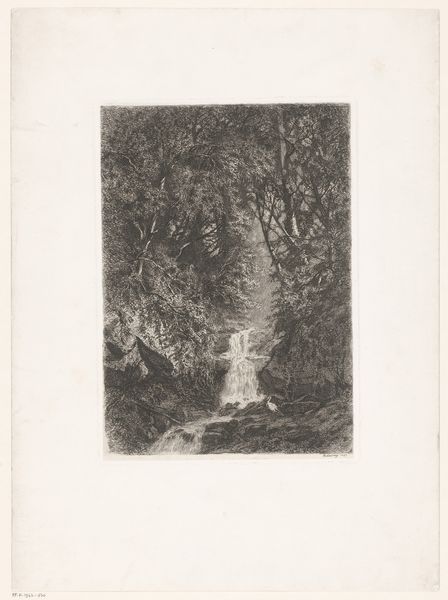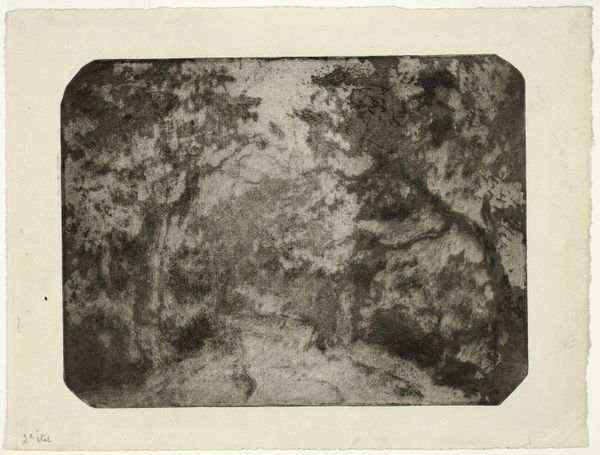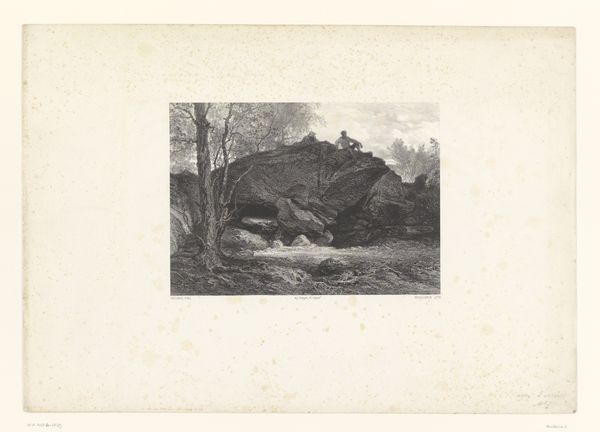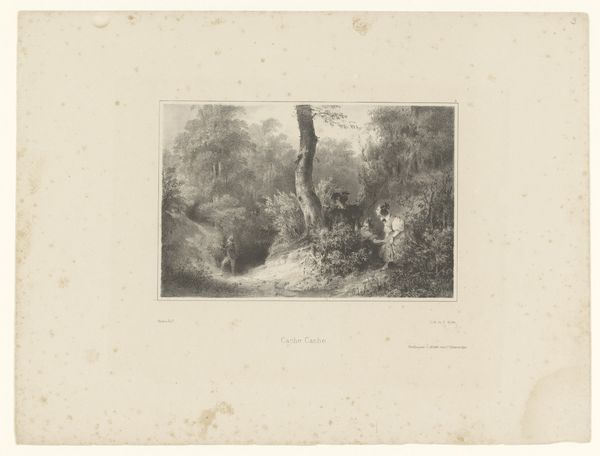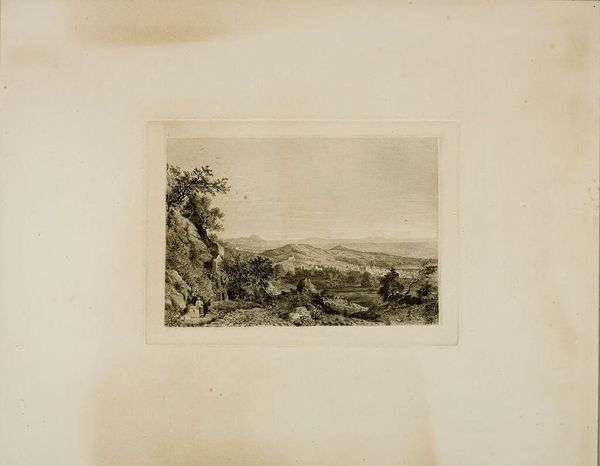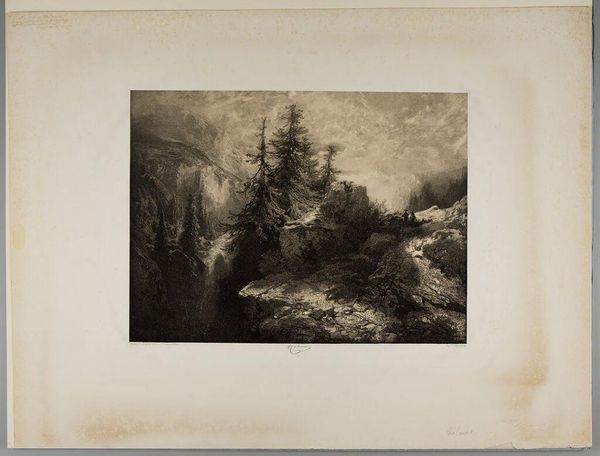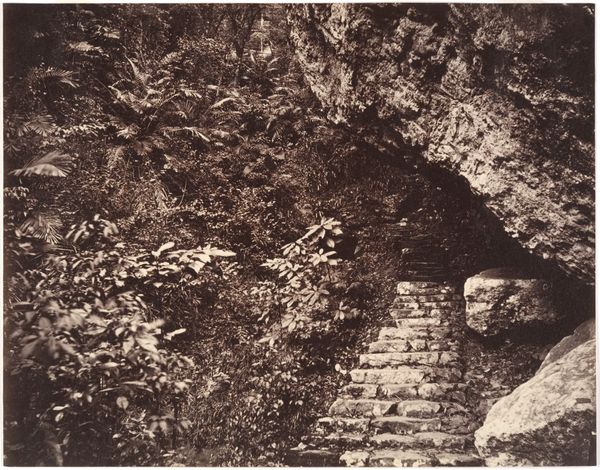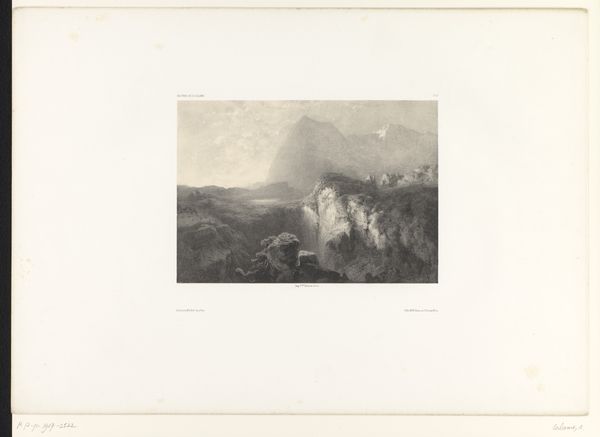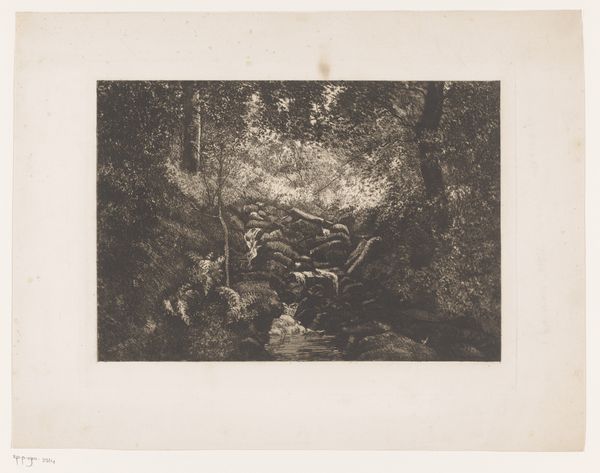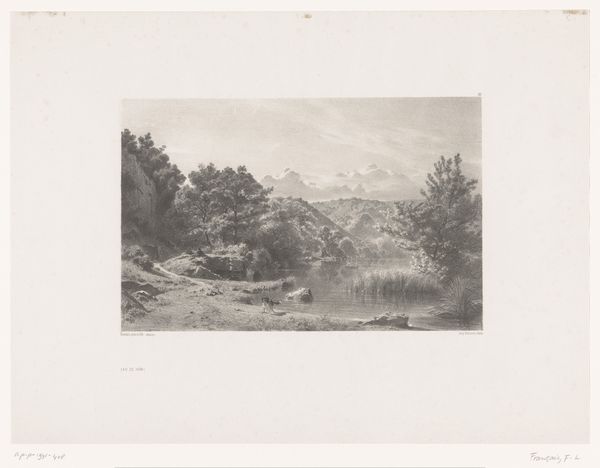
Dimensions: 6 x 9 in. (15.24 x 22.86 cm) (plate)9 7/8 x 12 3/4 in. (25.08 x 32.39 cm) (sheet)
Copyright: No Copyright - United States
Curator: We’re now looking at Thomas Moran’s "Twilight in Arizona," an etching and charcoal work created around 1880. It resides here at the Minneapolis Institute of Art. What are your initial impressions? Editor: It feels hushed. All sepia tones and that hazy glow where the sky kisses the land... it's the kind of scene that whispers stories. The mood reminds me of fading light during childhood summers – bittersweet and reflective. Curator: Bittersweet, yes, particularly if we contextualize Moran's work within broader socio-political themes of his time. Moran painted sublime, idealized versions of the American West— often obscuring the realities of Indigenous dispossession and ecological change linked to settler expansion. That twilight glow takes on a different tone, right? Editor: Absolutely, it’s that trick of memory again, or perhaps even fabrication. The more I look at it knowing that context, the less purely "romantic" it becomes. It hints at loss, maybe even guilt, as it obscures truth and distorts narrative to fit a desired vision. The muted shades amplify this for me. Curator: Right. And if we dig a little further into the concept of twilight as a metaphor, what does it evoke in relation to ideas of identity, particularly national identity and collective memory during this time period? Editor: For me, it signifies not just the end of a day, but the closing of an era. A certain idea of "untamed" America that was romanticized but never truly existed because the narratives excluded or even erased others, namely Native communities. Even the materiality -- that charcoal texture almost dissolves into nothing... fitting, no? Curator: Exactly. The work's medium contributes directly to the way in which history is remembered and forgotten and who benefits from specific renderings and omissions of historical record. Editor: I like the challenge it throws out. You see beauty and a certain mastery of light, but then, knowing the backdrop, the romance of it becomes… difficult. Which I suppose, is the point. Curator: Yes, the work demands constant re-evaluation. We must see the artistry, question the motives, and contextualize the narrative. Editor: Absolutely, that play between artistry and history is why it still pulls us in. We bring ourselves, our time, our awareness to that twilit landscape and it transforms again. It doesn't let us stay still.
Comments
No comments
Be the first to comment and join the conversation on the ultimate creative platform.


